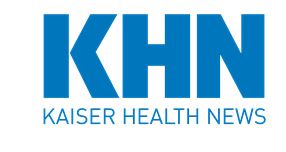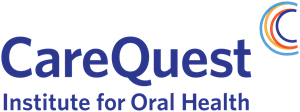When President Joe Biden declared the COVID-19 pandemic “over” Sept. 18, his message divided the medical community and sent a clear message: the nation is moving on from COVID-19.
On Oct. 13, HHS extended the public health emergency once again and sent another clear message: the healthcare system is not ready to move on.
“It’s not that we necessarily want to continue the PHE for a long period of time,” Nancy Foster, AHA’s vice president of quality and patient safety, told Becker’s. “We want to make sure that all of the work that needs to get done, does get done, before it ends.”
“There’s 400 people dying every day, and most of those are in hospitals,” Chip Kahn, president and CEO at the Federation of American Hospitals, told Becker’s. “I don’t think we’re really into a new normal where we can say with confidence that this is still not an exceptional situation.”
HHS last renewed the PHE July 15 for an additional 90 days — it also told states it would provide a notice 60 days before if it did decide to end it. Aug. 14, the date in which states would have 60 days’ notice, came without a peep from the federal agency, all but confirming the declaration would be extended once more.
The 11th renewal of the PHE since its first declaration in January 2020 allows the country to continue operating under pandemic-era policies until at least the next deadline: Jan. 11, 2023.
But continuing to label the current situation as an emergency while also declaring that emergency over is increasingly being questioned.
Illinois Gov. JB Pritzker was asked in a political debate Oct. 6 why his state has now issued the same PHE 34 times since March 2020. Ten states still have their emergencies in effect.
“We’re following the federal disaster declaration,” Mr. Pritzker said. “It allows us to bring in Medicaid funds and support people who have COVID-19 and support our hospitals.”
Sen. Richard Burr of North Carolina, the top ranking Republican on the Senate health committee, asked in a Sept. 19 letter to the president when Medicaid redeterminations would begin again, or when federal employees and contractors would no longer need to get vaccinated.
“Without a clear plan to wind down pandemic-era policies, the deficit will continue to balloon and the effectiveness of public health measures will wane as the American people continue to be confused by mixed messages and distrust of federal officials,” he wrote.
The number of Americans who say they’re concerned about COVID-19 is 57 percent — among the lowest seen throughout the pandemic, according to a Sept. 14 Ipsos poll. In addition, 82 percent believe the country is in a better pandemic position now than it was one year ago.
“I think it’s the policymakers that are making the judgment because they’re not happy with the implications of the PHE in terms of spending,” Mr. Kahn said. “Also it’s symbolic. If the president said we moved on and there’s still a PHE, then that may put pressure symbolically on the White House to say by Nov. 15 that we’re going to have to move on.”
Moving on isn’t so simple. The pandemic-era policies led to a complete overhaul of telehealth and who can use it, they fast-tracked approvals of COVID-19 vaccines and treatments, and they preserved healthcare coverage for millions of Medicaid beneficiaries nationwide.
Preserving telehealth
“Despite staffing shortages and financial pressures and all the other things we could also talk about, what has not yet happened is fully thinking through how to unwind some of the flexibilities we currently have, and how to perhaps make permanent some of the others,” Ms. Foster said.
The AHA is in favor of cementing many of the PHE policies through legislation, including several around telehealth, rural care and hospital at home programs.
In April 2020, HHS relaxed telehealth restrictions and told providers it would not enforce HIPAA rules around audio-only telehealth services, meaning video calls could be used to treat patients.
In June, the agency released new guidance explaining how providers can maintain HIPAA compliance with telehealth post-PHE because the nonenforcement policy will only remain in effect while the PHE is in place.
Lawmakers are also looking to extend virtual opioid use disorder treatments for individuals with high-deductible health plans. The current rule allowing payers to offer virtual care to members before they meet their deductibles is set to expire at the end of this year.
In addition, waivers that allow patients to be virtually-prescribed buprenorphine for opioid use disorder will also expire when the PHE does.
For Medicare, preserving telehealth flexibilities is also still a work in progress. Medicare has covered the cost of telehealth visits and allowed all Medicare-enrolled providers to bill for telehealth services since early 2020.
As of now, the Medicare flexibilities will end 151 days after the PHE expires. In July, the House passed The Advancing Telehealth Beyond COVID-19 Act, but the legislation must still be approved by the Senate for Medicare patients to continue using telehealth through 2024.
“It’s a complex network of flexibilities that have been allowed,” Ms. Foster said. “It is hard to imagine continuing the robust delivery of telehealth and the way we want to do it and the way our patients seem to want if we don’t have all of the policies we’re identifying because they do build on each other.”
Medicaid redeterminations
Medicaid enrollment initially swelled as a result of early pandemic joblessness and a continuous coverage requirement of the Families First Coronavirus Response Act, meaning states had to keep people enrolled in Medicaid for as long as there was a pandemic. Since February 2020, total Medicaid/Children’s Health Insurance Program enrollment has increased by 17.7 million people, or nearly 25 percent.
If the public health emergency expires, a redetermination process will begin a major disenrollment of Medicaid beneficiaries. Once that occurs, HHS estimates up to 15 million people could lose Medicaid coverage, with about half of those being children.
“Comprehensive health insurance coverage is critical for access to care and it would be really disruptive for people and prevent them from seeking care,” Molly Smith, AHA’s group vice president of policy, told Becker’s.
Ms. Smith says there will be major challenges if a Medicaid redetermination period is triggered – a process that is complicated in normal circumstances. States are suffering from workforce pressures too and it will be difficult for them to process millions of individuals concurrently, many of whom have moved in the last few years.
In addition, the AHA says the Biden administration and CMS have taken steps to support states with more time and information before the PHE eventually ends.
“There are policy things that can be done, and we think the administration has done many of them,” Ms. Smith said. “I know what they are trying to do is really make sure that all of the different stakeholders are aligned and speaking from the same talking points.”
All payers operating Medicaid plans will be affected, but those with higher enrollments are expected to be more impacted. The loss of beneficiaries will be mitigated through the Inflation Reduction Act’s extension of ACA premium tax credits through the end of 2025, which will allow some to regain coverage in the individual market.
Commercialization of COVID-19 vaccines and treatments
Until this fall, the federal government purchased and made available COVID-19 vaccines and treatments at no cost, but the process has begun to shift those costs to the commercial market.
“My hope is that in 2023, you’re going to see the commercialization of almost all of these products. Some of that is actually going to begin this fall, in the days and weeks ahead. You’re going to see commercialization of some of these things,” White House COVID-19 Response Coordinator Ashish Jha, MD, said Aug. 16.
The onus will fall on payers to become more involved in pricing negotiations, likely leading to higher premiums for members. Commercialization would also leave the over 26 million uninsured individuals in the U.S. with a major disadvantage in accessing free vaccines and treatments.
Some of these products only went to market after fast-track approval from the Food and Drug Administration’s emergency use authorizations, including vaccines. According to Bloomberg Law, that doesn’t mean the products disappear once the PHE does.
EUAs must be initially justified by a PHE, but the former is not reliant on the latter to exist. If HHS does terminate an EUA, it must provide an advanced public notice and begin a transition period “for proper dispositioning of the product.”
Physicians: This is still an emergency
It isn’t just the public and politicians looking to move on from COVID.
Starting Oct. 20, the CDC will no longer publish daily updates on total cases and deaths, instead opting to share the data every Wednesday. The agency has also dropped its quarantine protocols for everyone and masking requirements for healthcare facilities not located in a high-transmission community — much to the dismay of some physicians.
“That means that places with substantial transmission can unmask sick patients who haven’t been tested for COVID, right next to the elderly, chemo patients, people with pulmonary disorders, and pregnant women? My kid could identify the flaws with this plan,” said Megan Ranney, MD, emergency physician and academic dean of Brown University School of Public Health in Providence, R.I.
After the president declared the pandemic over, physicians across the country took to social media to express their disagreement.
“Heck no. With all due respect, [President Biden] — you’re wrong. Pandemic is not over. Almost 3,000 Americans are dying from #COVID19 every single week,” Eric Feigl-Ding, PhD, an epidemiologist and former faculty member at Boston-based Harvard Medical School, tweeted. “A weekly 9/11 is a very big deal. Don’t even get me started on #LongCOVID — wreaking havoc on millions more.”
Still, COVID-19 numbers have continued their downward trend. The nation’s seven-day case average was 40,631 as of Oct. 9, a 25 percent decrease in the last two weeks. The CDC forecasts new hospital admissions will remain stable or have an uncertain trend over the next month, and deaths are expected to fall.
“We don’t know what’s going to happen in the next few months,” Mr. Kahn said. “And if we look at Europe and the U.K., we see COVID on the rise. It is still a present issue.”




